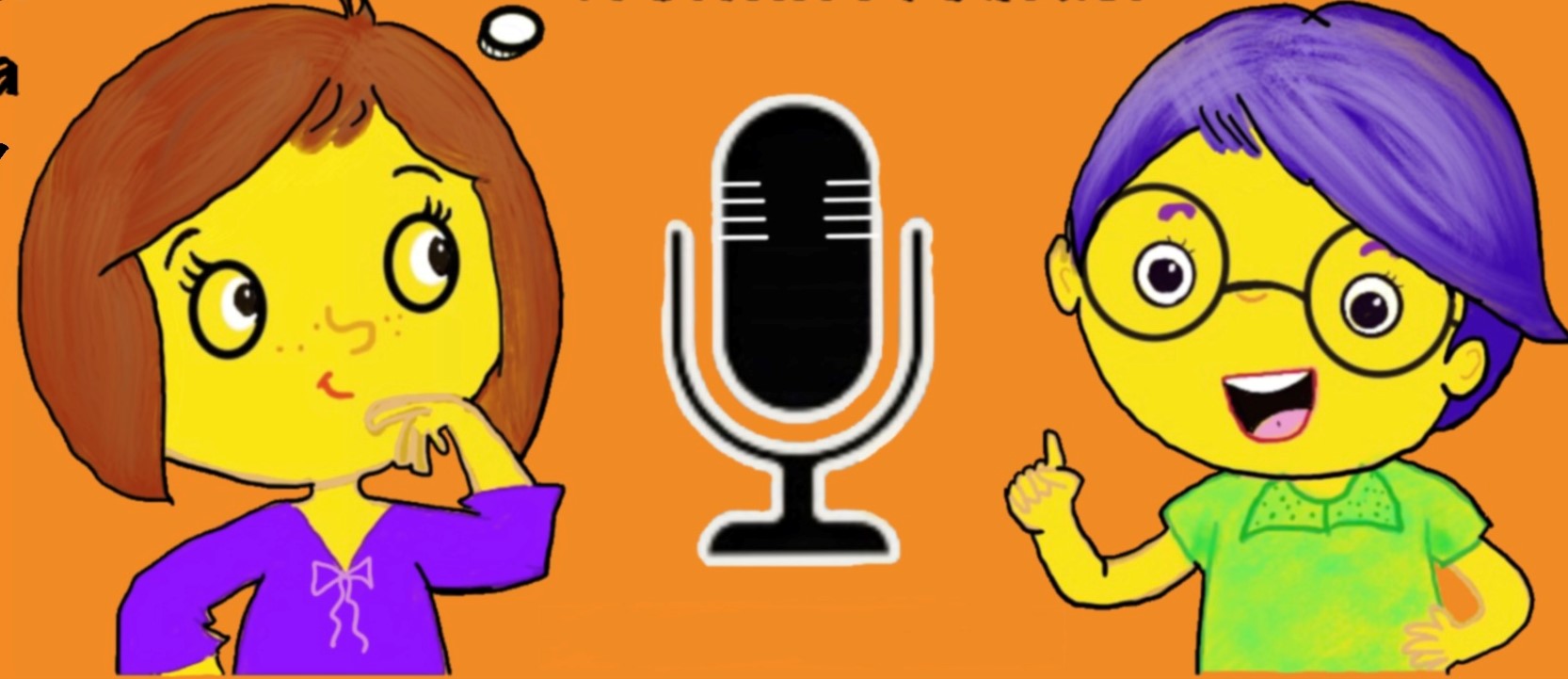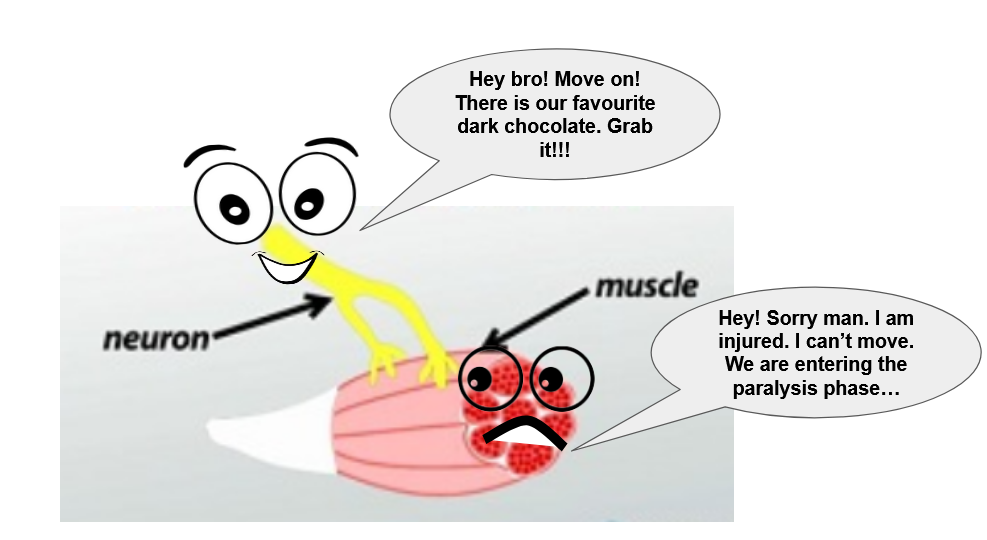2023-11-29 by Shakunthala Natarajan
Why Do People Get Paralysed? Science Blog

Listen to the episode, here.
It is one of those nail-biting cricket matches between your favourite team and their arch-rivals. You have been sitting for so long before the screen without moving an inch until you jump up with joy when your team clinches victory. As you rise and fall happily, you sense a great relief of having moved after a long pause. You realize what a great boon it is for animals to be able to move and be agile. At the same time, you also feel pain for some fellow people who are ‘paralysed’ and cannot move about freely, and you start wondering, why do people get paralysed. To find the answers to your question let us delve into this podcast of IndiaAsksWhy. Two of our curious listeners - Kanishka and Myra will also accompany you along with Utsuka and Jigyasa as you find your way through the paralysis maze.
First, you must be asking ‘What is paralysis?’. Well, paralysis is a condition where an individual is unable to move the body's muscles voluntarily. Let us look closely at the organ systems that produce movement to understand paralysis in a much better way. The nervous system is the master controller that works together with bones and muscles to produce movement. Hence, nervous and musculoskeletal systems are involved in aiding movement, implying that these get affected in paralysis. But do you know that there is also another important component that participates in producing a successful movement? Yes! It is the meeting place of the nerves and the muscles called the ‘neuro-muscular junction’. You must be surprised to know that, the malfunctioning of either the musculoskeletal system, nervous system, or neuromuscular junction can lead to paralysis. Now let us see what are these various factors that can cause paralysis. Ranging from accidents damaging the muscles, or nerves, to brain cancer, to other disorders of the brain like Parkinson’s disease, there are multiple causal factors for paralysis. Paralysis can be chronic and generalized with no proper cure or be temporary. Temporary paralysis also called ‘paresis’ can be tackled well with early intervention and careful diagnosis. So, as seen, paralysis is a complex phenomenon that has multiple causes, and different types of treatment.
Our explorers' team is awestruck by the complexity of paralysis and calls upon Dr Sheeba Vasu, a neuroscientist at JNCASR, Bangalore to uncover deeper aspects pertaining to paralysis. Dr Vasu draws an interesting analogy between fever and paralysis, where she reasons that paralysis like fever is the final effect of a number of underlying conditions and factors and not a standalone disease in itself. An accident leading to muscle injury, damaging the spinal cord, a cancer affecting the brain, or a disease affecting the neuro-muscular junction –all could cause paralysis. To put it simply, paralysis has many causes that show a single effect, just like fever!

Are you intrigued by the nature of paralysis? So is Kanishka, our explorer, and she wants to know if people with paralysis feel pain. Though in general, most of the paralysis cases involve loss of sense in the muscles, people with spinal cord injuries feel a sort of burning electrical pain called ‘neuropathic pain’. There is a huge amount of research effort being invested in this direction to alleviate the pain of paralysis patients and improve their lives through modern advances like virtual reality assisted therapy, and advanced implants. With treatment and therapy being one spectrum of the problem, diagnosis is another important part of dealing with the disease. The commonly known methods of scanning the bone or brain like X-ray, MRI or CT scan can be used to diagnose paralysis. Such tests can indicate nerve injury due to bone fractures. On the other hand, to understand muscle function better, doctors also use methods where they can study the electrical activity of the muscles eg: myelogram, and electromyogram. As in the case of most diseases, for paralysis as well, early and correct diagnosis coupled with targeted and affected treatment cycles can help obtain a better disease prognosis and improved quality of life.
We have now come to the end of our exploration into the world of movements and paralysis! I bet that you must be more curious to delve deeper into paralysis with our enthusiastic explorers team headed by Utsuka and Jigyasa. It is time to gear up your headphones and tune in to the podcast. Happy learning!
Reference
- NHS choices. Available at: https://www.nhs.uk/conditions/paralysis/ (Accessed: 29 October 2023).
- Peckham, P.H. and Kilgore, K.L. (2013) ‘Challenges and opportunities in restoring function after paralysis’, IEEE Transactions on Biomedical Engineering, 60(3), pp. 602–609. doi:10.1109/tbme.2013.2245128.
- professional, C.C. medical (no date) Paralysis: What is it, Diagnosis, Management & Prevention, Cleveland Clinic. Available at: https://my.clevelandclinic.org/health/diseases/15345-paralysis (Accessed: 29 October 2023).
- Research on paralyzed patients brings new treatment options to VCU Health: VCU Health (no date) Research on paralyzed patients brings new treatment options to VCU Health | VCU Health. Available at: https://www.vcuhealth.org/news/research-on-paralyzed-patients-brings-new-treatment-options-to-vcu-health (Accessed: 29 October 2023).
- Stubblefield, H. (2018) Paralysis: Definition and patient education, Healthline. Available at: https://www.healthline.com/health/paralysis (Accessed: 29 October 2023).
- Thomas, Dr.L. (2022) What causes paralysis?, News. Available at: https://www.news-medical.net/health/What-Causes-Paralysis.aspx (Accessed: 29 October 2023).
